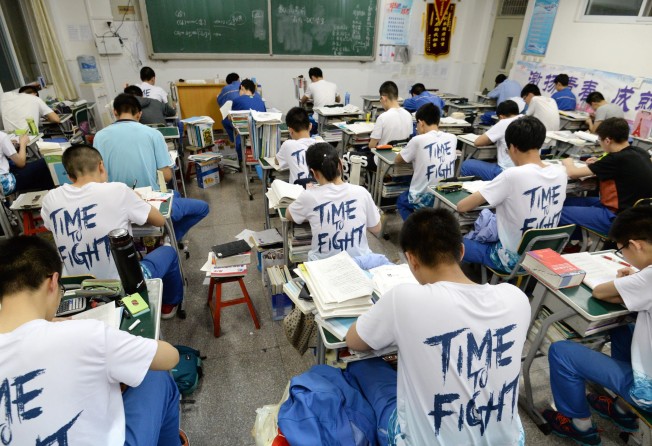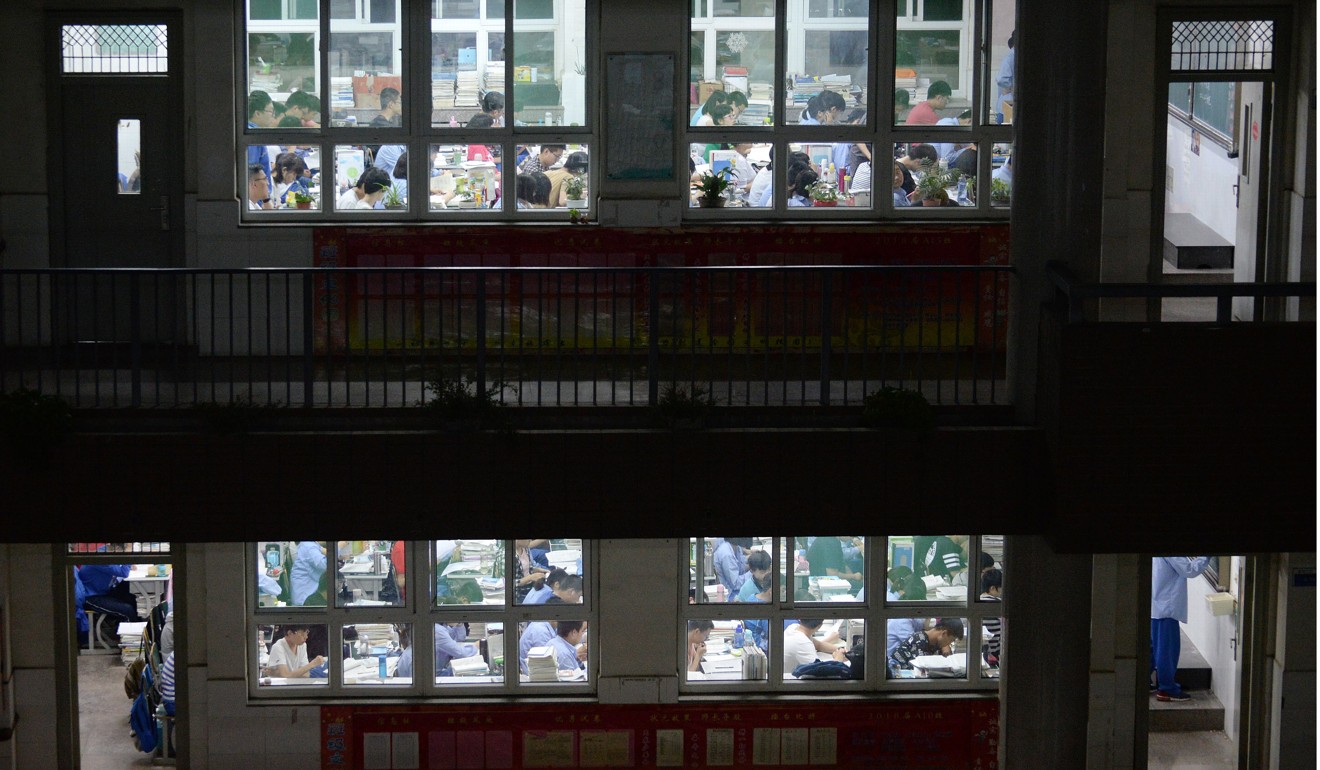
Chinese firms offer US$8,000 consultations to help students choose university courses
Services include predictions using algorithms to help identify which programme they will have a better chance of getting into

With China’s annual make-or-break college entrance exams over, it has emerged that many tutorial centres are now offering services to help students apply for university and identify courses they will have a better chance of getting into – at a cost of up to US$8,000.
That’s according to a report by state-run Xinhua last week, which said the centres were offering various services to help students and their parents choose undergraduate programmes including one-on-one consultations, and predicting the admissions rate for certain courses using algorithms.
The report highlighted companies including Yun Zhi Yuan in Hangzhou, which advertises a one-on-one consultation for US$900 to US$8,000 on its website.
It also runs courses – for US$400 to US$2,000 – on applying for university after the college entrance exams have been taken.

Most Chinese universities base their admissions on the exams, or gaokao, which were held from June 7 to 9 this year. Programme choices are made before the exams, but a second set of forms is also filled in afterwards, when students can change their preferences.
Another company, CompuBridge Research Institute of College Planning, is offering a course for nearly US$7,000 run by a consultant with a master’s degree in education who has “extensive experience” helping students to apply for university.
But according to the report, many of those offering such services are high school teachers or they work in university admissions offices.
Some of the tutorial centres also claim they have an algorithm that can calculate the probability of students being admitted to a university, according to the number of applications it has received in the past and the scores that made the cut, the report said.

Another company, China Gaokao Admission Network Smart Card system, claims it can tell students what their likelihood is of being accepted by a university based on admissions from previous years, according to the report.
“[After entering their scores] our system gives students a ranking for the past year and this year,” a spokesman for the network was quoted as saying.
Several of the companies – including CompuBridge Research Institute of College Planning – claimed they had based their databases and predictions on official figures from the Ministry of Education and the Ministry of Examination.
But both ministries denied they had provided data to any of the companies, according to the report.
“They say their databases are based on official ministry figures, but that’s impossible,” a spokesperson from one tutorial centre that does not offer such services told Xinhua.
Xiong Bingqi, vice-president of the 21st Century Education Research Institute, said any expert opinion was no replacement for students making their own choices and selecting courses according to their own abilities and interests.
“The admissions scores are not known until all the processing [of the exam results] is done,” Xiong was quoted as saying. “So all these experts can really give parents and students is a prediction drawing on previous admissions scores – and they can maybe steer them towards programmes that might have had a higher acceptance rate in the past.”